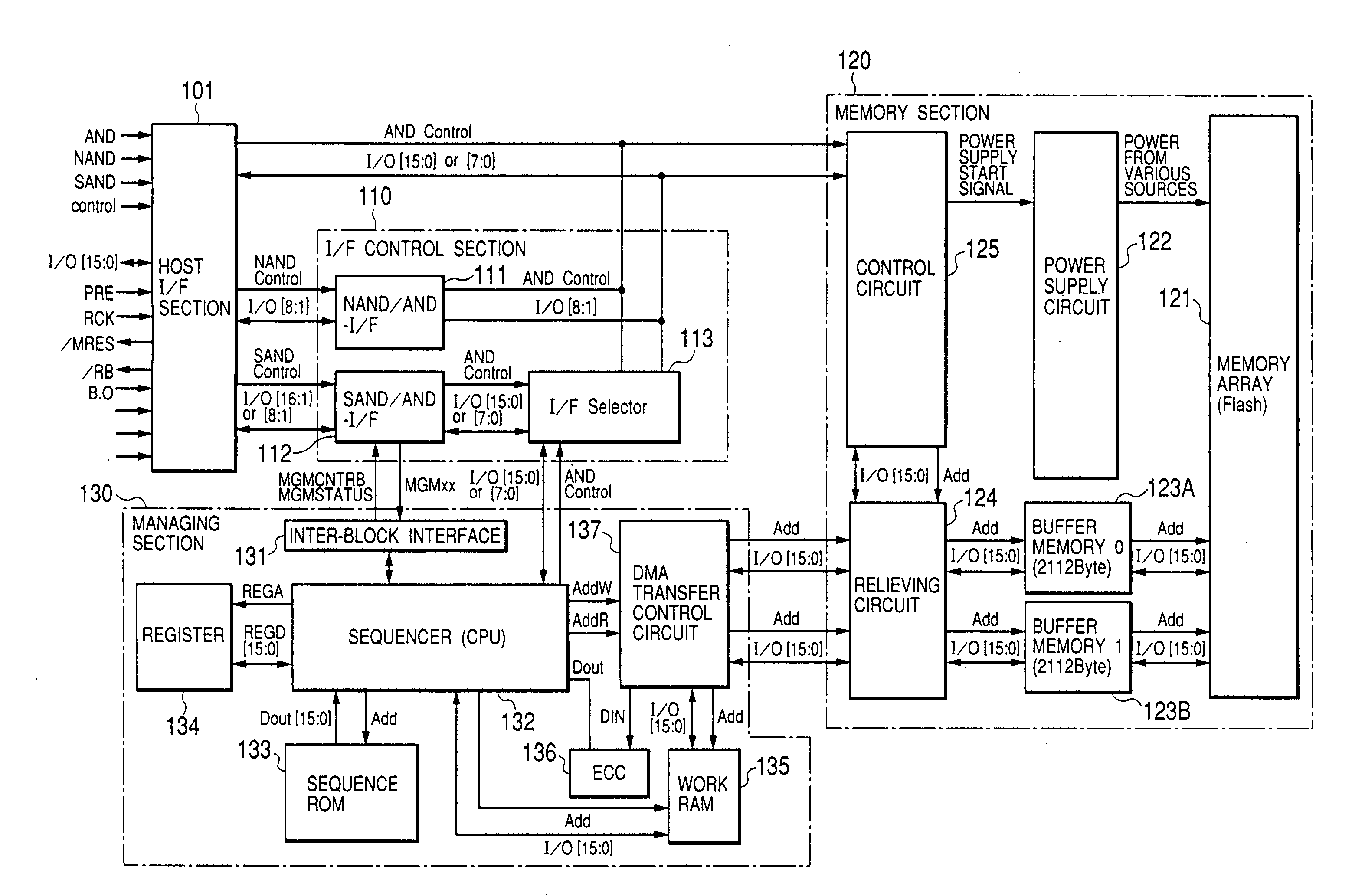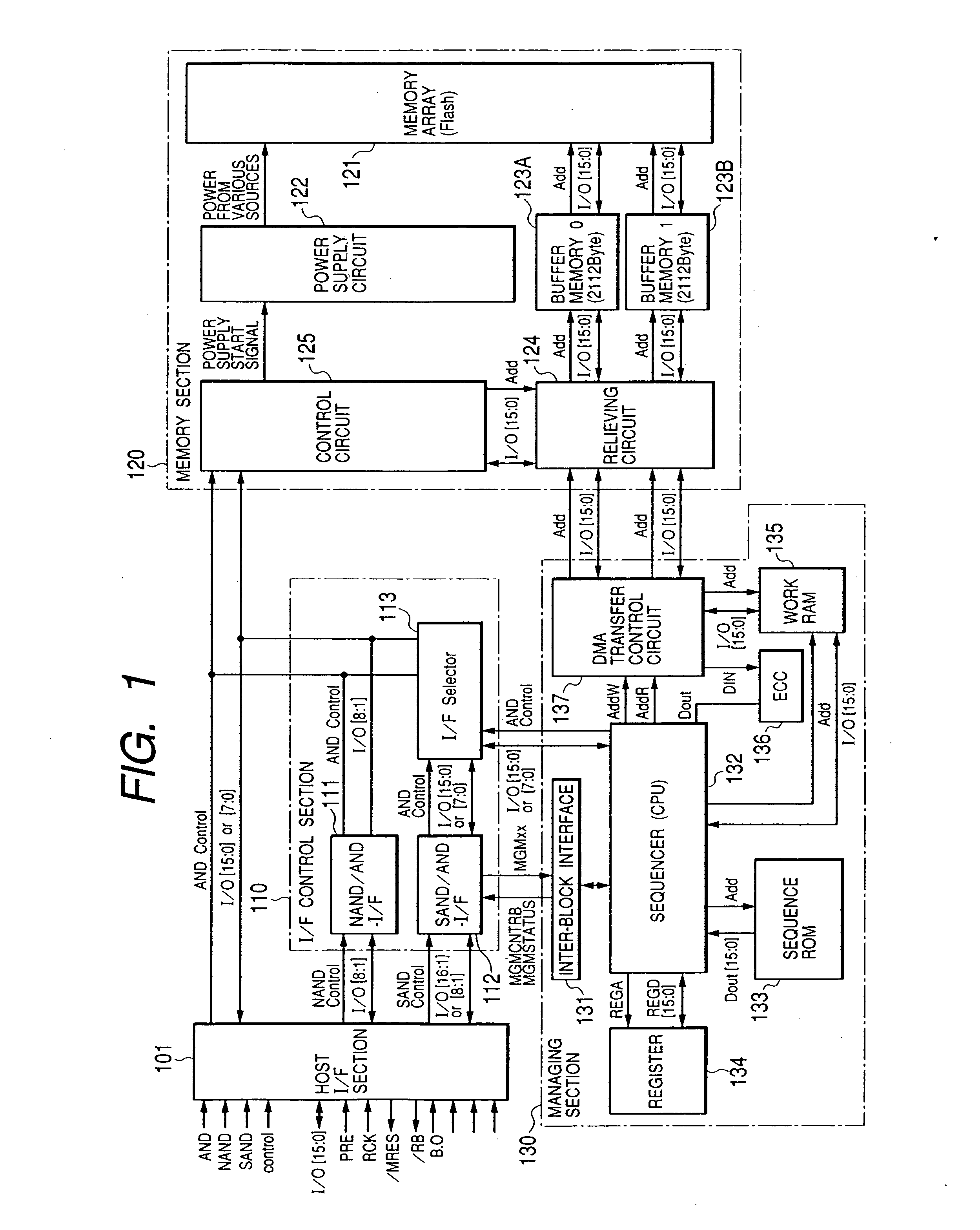Nonvolatile memory
a non-volatile memory and memory technology, applied in the field of non-volatile memory, can solve the problems of reducing unable to recognize the memory, and unable to operate normally in the system, so as to reduce the load on the system developer
- Summary
- Abstract
- Description
- Claims
- Application Information
AI Technical Summary
Benefits of technology
Problems solved by technology
Method used
Image
Examples
Embodiment Construction
[0044] One preferred embodiment of the present invention will be described in detail below with reference to the accompanying drawings.
[0045]FIG. 1 is a block diagram illustrating an embodiment of flash memory as an example of nonvolatile memory to which the present invention can be effectively applied. The flash memory of this embodiment is composed of a host interface section 101 to perform inputting and outputting of signals to and from a controller, such as an external host CPU, an interface control section 110 to control the host interface section 101, a memory section 120 consisting of a flash memory array 121 in which a plurality of nonvolatile memory elements (memory cells) are arranged in a matrix and its peripheral circuits, and a managing section 130 to manage defective addresses and the like. These elements are formed over a single semiconductor chip, such as a monocrystalline silicon chip.
[0046] Whereas conventional flash memories include a plurality of kinds of chips...
PUM
 Login to View More
Login to View More Abstract
Description
Claims
Application Information
 Login to View More
Login to View More - R&D
- Intellectual Property
- Life Sciences
- Materials
- Tech Scout
- Unparalleled Data Quality
- Higher Quality Content
- 60% Fewer Hallucinations
Browse by: Latest US Patents, China's latest patents, Technical Efficacy Thesaurus, Application Domain, Technology Topic, Popular Technical Reports.
© 2025 PatSnap. All rights reserved.Legal|Privacy policy|Modern Slavery Act Transparency Statement|Sitemap|About US| Contact US: help@patsnap.com



